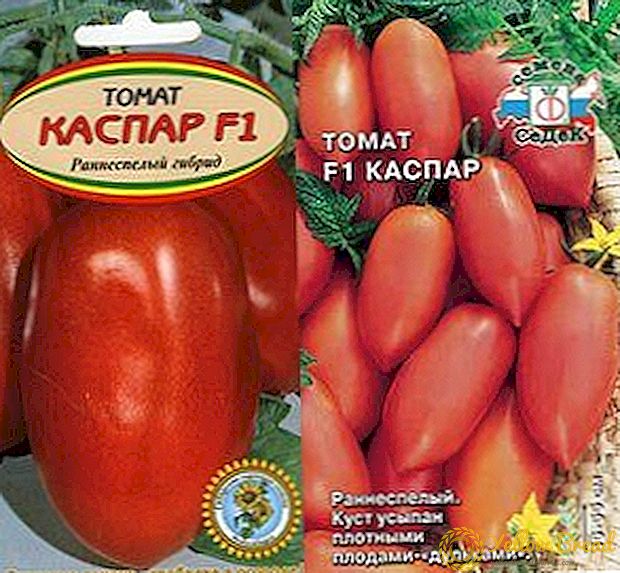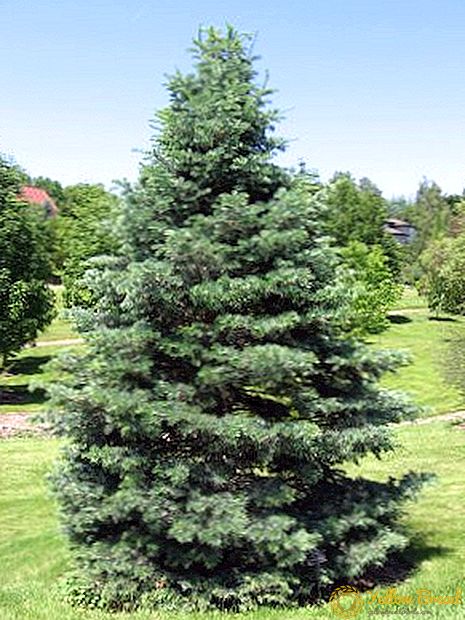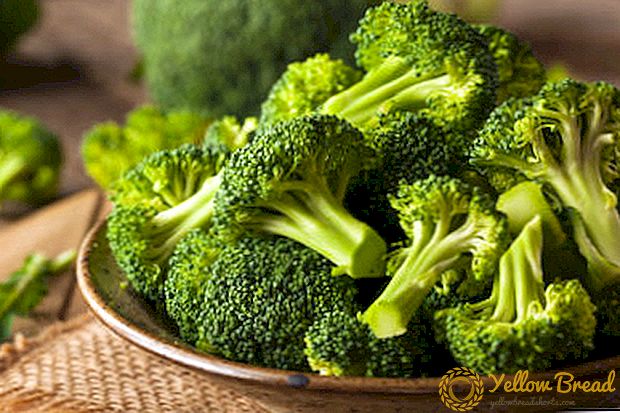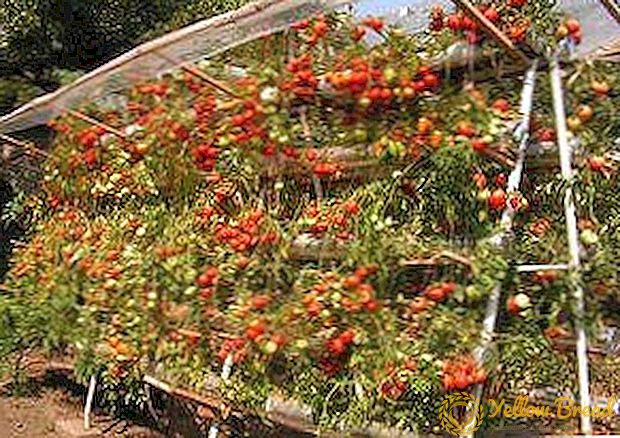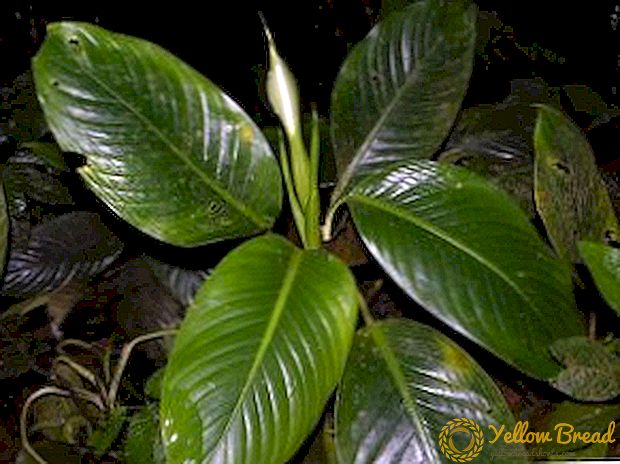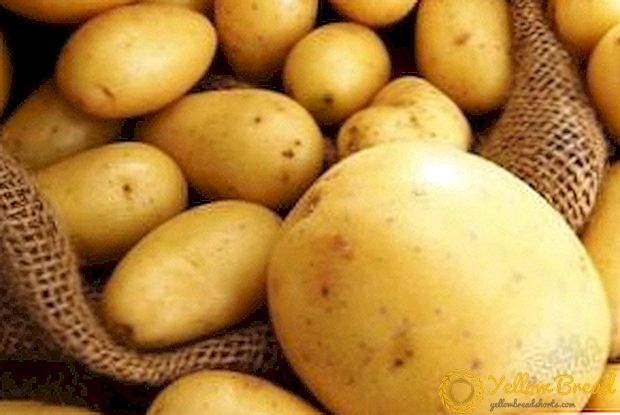
The potato variety Caprice (Int. - Caprice) appeared relatively recently in Russia, but quickly spread throughout the gardens of the Russian Federation.
They love him for obvious advantages - high yields, unpretentiousness to the soil and conditions, resistance to drought.
In this article you will find a detailed description of the variety, get acquainted with the main characteristics, learn which diseases are most susceptible to potatoes.
Potato Caprice variety description
| Grade name | Caprice |
| general characteristics | medium early table variety, unpretentious, easily tolerates drought |
| Gestation period | 70-80 days |
| Starch content | 13-17% |
| Mass of commercial tubers | 90-116 gr |
| The number of tubers in the bush | 6-10 pieces |
| Yield | 200-400 centners / ha |
| Consumer quality | good taste, suitable for soups, frying, fries |
| Recumbency | 97% |
| Skin color | yellow |
| Pulp color | yellow |
| Preferred growing regions | Central |
| Disease resistance | resistant to golden cyst nematode, potato carcinoma, wrinkled and banded mosaic |
| Features of growing | standard agricultural technology |
| Originator | SAATZUCHT FRITZ LANGE KG (Germany) |
Variety Caprice - medium early, potatoes for storage (at technical maturity) can be harvested after 70 - 80 days after the appearance of most shoots. 
You can choose new potatoes for food earlier has a great taste and contains almost no starch. It is impossible to keep such potatoes for a long time, the skin is thin, fragile, lagging behind, only tubers with a dense, thick skin are stored.
Early ripening varieties and varieties of medium ripeness planted more for eating in summer, most of these varieties will not be stored for a long time. Actually planting several varieties of potatoes, different in degree of ripening.
Characteristic
The shape of the “Caprice” tubers is round-convex, oval, of almost regular shape. Sizes - average, weight - from 90 to 120 g.
Peel - smooth, yellow. The eyes are small, in a small amount, not very deep. Pulp with a high content of dry substances, dark - yellow.
Starch content - 13% - 17% - the average level. Starch will accumulate more during the sunny, warm summer season, fertilizers also affect starchiness in root vegetables.
You can compare the starch content in different varieties of potatoes using the table below:
| Grade name | Starch content |
| Caprice | 13-17% |
| Farmer | 9-12% |
| Minerva | 15-18% |
| Rogneda | 13-18% |
| Lasock | 15-22% |
| Ryabinushka | 11-18% |
| Lady claire | 12-16%% |
| Bellarosa | 12-16% |
| Veneta | 13-15% |
| Lorch | 15-20% |
| Margarita | 14-17% |
Stem bush, upright or semi-upright, medium height. The leaves are typical potato in shape, small size, grow at intervals, dark green, wrinkled structure, without pubescence.
Inflorescences consist of several small or medium flowers, the corolla is white.
Climatic zones of cultivation
"Caprice" is very popular in European countries, in the territory of the Russian Federation it grows best in the Central region. It has an average degree of precocityIt has time to develop in the northern regions of the country. In the southern regions endure drought.
Cultivation is possible throughout the territory of the Russian Federation and nearby countries.
Yield
The yield is quite highWith favorable conditions and proper care, you can achieve a yield of more than 5.8 tons per hectare. The average yield is about 400 centners per hectare, which exceeds the norms of the established standards. Marketable yield - up to 350 kg per 1 ha.
And in the table below you will see what are the yields of other varieties:
| Grade name | Productivity (c / ha) |
| Caprice | 200-400 |
| Alladin | 450-500 |
| Beauty | 400-450 |
| Grenada | 600 |
| Vector | 670 |
| Sifra | 180-400 |
| League | 210-350 |
| Elmundo | 250-345 |
| The pot | 100-200 |
| Cheri | 170-370 |
| Bryansk delicacy | 160-300 |
Application
"Caprice" - table variety, consumed most often in food, not boiled soft due to the low starch content. Suitable for dishes where you need whole potatoes, soups, frying, boiling, french fries.
A green potato (which has lain in the sun for some time) contains toxic substances, its use can harm the body. In the production of starch, components of alcohol components, cosmetic masks, other drugs using roots, peel, tops.
Potato juice is used in medicine - for the prevention of cardiovascular diseases, burns, relieves inflammation, but in large quantities can increase the temperature.
Taste qualities
The grade, according to the test commission, has good tastes - moderately sweet, fragrant. All the real taste of potatoes can be tasted only by boiling them in their skins, all useful trace elements will be preserved.
A photo
The photo shows a variety of potato Caprice:



Advantages and disadvantages
Disadvantages, as in any sort of culture are found, but not too much. Poorly resistant to late blight of tubers and tops.
Dignity is much greater:
- fast development;
- bountiful harvest;
- large roots, aligned in shape and size;
- high taste qualities;
- drought resistant;
- resistant to mechanical damage;
- resistant to certain diseases;
- long stored.
Country of breeding, year of registration
"Caprice" bred by breeders from Germany, the originator and the patent owner is FRATTZ LANTH KG (ZFL).
In the State Register of the Russian Federation in the Central growing region included in 2014
Special features
Growing up
Potatoes are dug up for planting almost immediately after flowering, carefully chosen for storage - diseased tubers are not allowed.
The soil can be any Caprice is not picky about soil type, but it must be without stones, otherwise there may be damage and deformation of the tubers.
Landing is conducted from April to May. The temperature at a depth of 10 cm in the soil should be above 13 degrees. The distance between plants should be about 30 cm.
Furrows or beds are recommended to do from south to north. Potato does not tolerate waterlogging, it is necessary to choose not very wet areas.
Seed potatoes Caprice can be treated with disinfectants. In the furrows during planting it is necessary to add wood ash, an excellent fertilizer.
Hilling, loosening is welcome. During the flowering period, the flowers can be cut off, so all development will go to the tubers. Potato varieties Caprice should not be held in the ground. And you need to dig in good, warm weather.
Storage
Dug potatoes need put in a ventilated room to dry, then place in a permanently ventilated storage room.The temperature should be no more than 4 degrees, the potatoes will begin to deteriorate.
Diseases and pests
This variety is highly resistant to potato carcinoma, golden cyst-nematode, wrinkled and banded mosaic.
For the prevention of other pests (Colorado potato beetle, Medvedka) it is necessary to use microbiological preparations. In the fight against the Colorado potato beetle will help special chemicals: Aktara, Corado, Regent, Commander, Prestige, Lightning, Tanrek, Apache, Taboo.
 When growing potatoes, additional chemicals are often used to improve yields or pest control.
When growing potatoes, additional chemicals are often used to improve yields or pest control.Read all about the benefits and dangers of fungicides, herbicides and insecticides in useful articles on our site.
Summing up, I would like to note that the Caprice potato is no wonder enjoyed by many gardeners and farmers. This potato with proper care will delight you with a tasty and abundant harvest.

